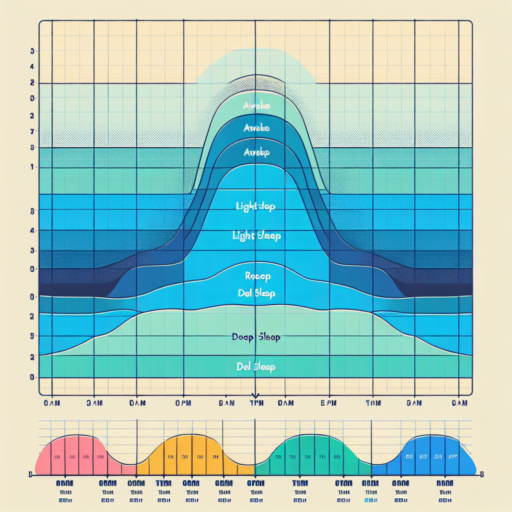What percentage of each sleep stage is normal?
Understanding the normal distribution of sleep stages throughout the night can offer valuable insights into sleep quality and overall health. Sleep can be categorized into several stages, each playing a crucial role in cognitive function, emotional regulation, and physical health. The percentage of time spent in each sleep stage can vary from person to person but falls within general ranges deemed as normal by sleep experts.
The sleep cycle is divided into REM (Rapid Eye Movement) and non-REM stages, which include N1, N2, and N3, also known as deep sleep or delta sleep. On average, a healthy adult spends approximately 5-10% of their sleep in N1, which is the lightest stage of sleep. This stage serves as a transition from wakefulness to sleep and happens right after falling asleep. Moving deeper, N2, which accounts for 45-55% of total sleep time, serves as the bridge to the more restorative sleep stages. It is in N2 that our bodies prepare for deep sleep, slowing heartbeat and respiration in the process.
The most restorative stage, N3, encompasses 13-23% of nightly sleep for adults. Known for its role in memory consolidation, physical recovery, and hormonal regulation, N3 is crucial for overall well-being. Conversely, REM sleep, associated with vivid dreams, takes up approximately 20-25% of a night’s sleep. This stage is essential for brain functions, including memory and learning. Notably, the percentage of REM sleep increases in the second half of the night, highlighting the cyclic nature of sleep stages and their importance in health and cognitive functions.
How much time is in each sleep stage?
Understanding the time spent in each sleep stage is crucial for acknowledging how sleep patterns impact our overall well-being. Sleep is divided into two main types: REM (Rapid Eye Movement) and NREM (Non-Rapid Eye Movement), with NREM further categorized into three stages. Each stage has its specific duration and importance in the sleep cycle.
The Distribution of Sleep Stages
The first stage of NREM sleep, known as N1, is the lightest stage of sleep, typically lasting for 1 to 5 minutes. This is the stage where you drift off to sleep and can be easily awakened. Following N1, the N2 stage occurs, lasting approximately 10 to 25 minutes in the first cycle, and it significantly contributes to your total sleep time, making up 45-55% of adult sleep. Deep sleep emerges during the N3 stage, lasting 20 to 40 minutes during the first sleep cycle. As the night progresses, the duration of N3 sleep decreases, and REM sleep periods extend.
REM Sleep: The Paradoxical Phase
REM sleep first appears about 90 minutes after falling asleep and alternates with NREM sleep periods throughout the night, about every 90 minutes. The first REM stage may last only a short period, but with each cycle, REM sleep duration increases, typically extending up to an hour as the night progresses. This stage is known for vibrant dreams and plays a crucial role in memory consolidation and mood regulation.
In a full sleep cycle, adults spend approximately 50-60% of their sleep in NREM stage 2, 20% in deep sleep (NREM stage 3), and between 20-25% in REM sleep. Understanding these proportions and the importance of each stage aids in comprehending how sleep impacts physical and mental health. It emphasizes the need for a balanced sleep cycle to achieve optimal health and well-being.
No se han encontrado productos.
What are the 5 stages of sleep?
Understanding the 5 stages of sleep is crucial for grasping how sleep impacts our health, mood, and overall wellbeing. Sleep is typically divided into two main types: Rapid Eye Movement (REM) sleep and Non-REM sleep, which includes four stages. Each stage plays a significant role in the body’s recovery and brain health.
The journey through the night begins with stage 1, which is the transition phase from wakefulness to sleep. This stage is characterized by slow eye movement and reduced muscle activity. It’s often described as the lightest stage of sleep, from which individuals can easily be awakened. Following stage 1, we enter stage 2, a slightly deeper level of sleep. During this stage, the body begins to relax more deeply, with further decreases in heart rate and body temperature. This stage prepares the body for deep sleep.
Stages 3 and 4 are known as deep sleep or slow wave sleep. Here, the body repairs itself, and growth and development occur. The body’s energy is restored, and critical hormones are released. This phase is vital for physical recovery and health. Lastly, the REM stage occurs, which is where most dreaming happens. REM sleep is essential for cognitive functions, such as memory consolidation and learning. It is characterized by rapid eye movements, increased brain activity, and temporary muscle paralysis.
Each stage of sleep plays a pivotal role in ensuring that we wake up feeling refreshed and rejuvenated. The cycle through these stages multiple times a night is what equips our body and mind for the day ahead. Understanding these stages helps to highlight the importance of a good night’s sleep for our overall health and wellbeing.
Which is better, REM or deep sleep?
Comparing REM and deep sleep stages is essential for understanding how they uniquely contribute to our health and well-being. REM, or Rapid Eye Movement sleep, is often associated with the phase where dreaming occurs most frequently and vividly. This sleep stage plays a crucial role in cognitive functions such as memory consolidation and emotion regulation. On the other hand, deep sleep, or slow-wave sleep, is the most restorative phase of sleep, crucial for physical recovery, immune system strengthening, and growth hormone release. Both REM and deep sleep cycles are vital, each serving different but complementary roles in our overall sleep architecture.
In regard to cognitive benefits, REM sleep appears to have a significant edge. Studies suggest that REM sleep facilitates learning, memory processing, and emotional regulation. During REM, the brain is almost as active as it is while awake, which supports complex functions such as pattern recognition and neural connection strengthening. Conversely, deep sleep is pivotal for physical health and recovery. It lowers blood pressure and heart rate, enabling rest and recovery of the cardiovascular system, and it promotes muscle growth and repair through the secretion of growth hormones.
The necessity of experiencing both REM and deep sleep stages for a balanced sleep cycle cannot be overstated. While REM sleep may enhance brain function and emotional well-being, deep sleep is indispensable for physical health and recuperation. Evaluating which is better depends on understanding the unique benefits each stage offers, underscoring the importance of a holistic approach to sleep health. Aiming for a sleep pattern that includes ample amounts of both REM and deep sleep might be the key to achieving optimal health and performance.



